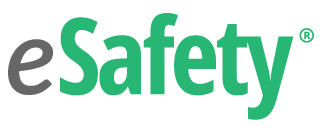Understanding basic first aid for the workplace is an essential component of creating a safe environment within your business or organization. When your employees are trained in basic first aid, they will be able to respond quickly and appropriately to a workplace injury or medical condition. This article gives a general overview of what first aid in the workplace is, and what it’s meant to do, along with 5 basic first aid tips your team should know.
What is First Aid in the Workplace?
First aid in the workplace is defined as the necessary temporary assistance an injured person needs until professional medical care can be provided. First aid is not medical care, and it’s important to remember that as you go through any kind of first aid training, as well as if you provide first aid in the event of an emergency.
What is the Purpose of Basic First Aid Training?
The purpose of basic first aid training is to prepare you and your coworkers in the event that something does happen in the workplace. Remember, first aid is not medical treatment, but rather the basic first aid understanding you need to help someone who has been injured in the workplace until a medical professional can provide care.
It’s also good to note that basic first aid does not take the place of CPR or AED training. If you are looking to learn those skills, it’s best to turn to the American Red Cross or the American Heart Association for professional training.
Are There OSHA Basic First Aid Requirements My Workplace Needs to Meet?
“The OSHA First Aid standard (29 CFR 1910.151) requires trained first-aid providers at all workplace of any size if there is no “infirmary, clinic, or hospital in near proximity to the workplace which is used for the treatment of all injured employees.”
While this is OSHA’s basic standard, your workplace may have to meet additional first aid training requirements depending on the hazards in your industry. It’s always important to talk to your employer regarding your workplace’s specific OSHA basic first aid requirements.
5 Basic First Aid Tips for the Workplace
Now that we have a shared understanding of the basics of first aid — what it is, what it does, and what requirements your workplace may need to meet — let’s go over 5 basic first aid tips for the workplace.
1. Understand the Primary Goals of First Aid
As we’ve mentioned before, first aid is not considered medical treatment. Instead, it is the basic understanding you need to help someone with an injury until medical professionals can make it to the scene. With that in mind, these are the three primary goals of first aid:
- Preserve life
- Prevent further injury
- Promote recovery
In the event that there is an injury in the workplace, it’s your goal to do what you can to keep that injured person safe and alive, so that they can recover quickly after being treated by medical professionals.
2. Always Assess the Scene First
No matter what the situation, if you encounter a person who has been injured in the workplace, it’s important to assess the scene before you rush in to provide first aid. This is the first step of providing basic first aid, and it is important. Here are a few reminders regarding what you should do to assess the scene:
- Survey the scene for danger. Is there any danger in the area around the injured person? If the scene is safe, you can enter to provide first aid. If the scene is dangerous, it’s important to assess and eliminate that danger before you rush onto the scene. If the scene is not safe, contact emergency services right away.
- Look for the cause of injury. If it is safe to approach the injured person, do your best to look for the cause of injury. The more you know about how the person was or might have been injured, the more helpful you can be to medical professionals.
- Do not move the injured person. It’s important that you do not move the injured person before emergency services arrive. It can be difficult to assess internal injuries, and it’s always best to let the professionals determine how best to move the injured individual.
- Call emergency services or 911. Once you’ve ensured that the area is safe, and you’ve made it to the injured individual, always call emergency services or 911. If you have a bystander place the call to emergency services, make sure that they are well informed so the appropriate assistance is dispatched to the scene. Stay on the line unless the operator specifically instructs you to hang up.
- Administer basic first aid. If the scene is safe, you are trained and able to administer basic first aid, you should do so at this time. If you’re not sure what is wrong with the person, wait with them until emergency services arrive. Do your best to keep the injured person calm by letting them know they are not alone, and that help is on the way.
3. Remember the Good Samaritan Law
If you encounter someone in your workplace, or even outside your workplace, who has been injured, it’s important that you help whenever you can. The Good Samaritan law provides legal protection to those who give reasonable assistance to those who have been injured, who are in danger, or who are otherwise incapacitated.
If you are using basic first aid to try to help someone who is injured, you are protected by the Good Samaritan law. The law was created so that you don’t have to worry about negative repercussions in the event that the injury is serious.
4. Know the Most Common Medical Conditions in the Workplace
When it comes to first aid in the workplace, it’s always good to know the most common medical conditions that you may have to respond to. If you’re familiar with these conditions, you’ll be able to provide the proper first aid care, helping that individual until medical professionals can provide medical care. The most common medical conditions in the workplace include:
- Respiratory related distress: asthma attacks, allergic reactions, and choking are some of the most common issues you are likely to encounter.
- Heart attacks
- Stroke
- Shock
- Seizures
If you’re learning about basic first aid in the workplace, it’s good to find training that can help you identify these specific medical conditions. The better prepared you are, the more easily you’ll be able to notice the warning signs of these medical conditions. When you can recognize those warning signs right away, you can call for help immediately, and administer the proper first aid care.
5. Always Protect Yourself
One of the most important things to remember when it comes to first aid is to always protect yourself. The only way to provide helpful, effective first aid care is to ensure that you’re not in any danger, either. Here are a few precautions you should take to make sure you’re protected before you administer first aid in the workplace,
- Wear PPE. PPE, or personal protective equipment, should be worn to protect yourself from exposure. Examples of PPE are latex gloves, disposable masks, gowns, face shields or even goggles.
- Do not enter if the scene is unsafe. When you assess the scene before providing first aid, you may see that the scene is unsafe. In that case, it’s important that you do not enter the scene. If there is danger present, it’s best to call emergency services and keep yourself safe so you do not become injured also.
- If there is someone on the scene with more medical training allow them to take over. You may be able to help by calling emergency services, fetching the first aid kit, escorting emergency personnel to the scene or helping to keep the area clear.
We hope this article helps answer a few of your general first aid in the workplace questions. If it’s been a while since your team has completed basic first aid training, a refresher course might be helpful. The eSafety Basic First Aid two-part course is a great fit, offering information on everything from assessing the scene to properly administer first aid for some of the most common medical conditions. For more information about our courses, contact our team online or request a free quote today!

